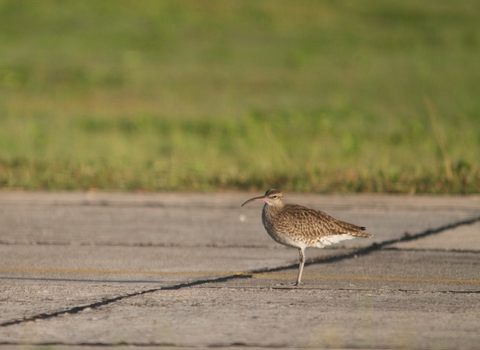
©Tom Hibbert
Whimbrel
The whimbrel is very similar to the curlew, but a little smaller and with a striking face pattern. Its eerie call is a series of seven whistles; listen out for it around the coast as its passes through on migration.
Enw gwyddonol
Numenius phaeopusPryd i'w gweld
April to AugustGwybodaeth am rywogaethau
Ystadegau
Length: 40-46cmWingspan: 82cm
Weight: 430g
Average lifespan: 11 years
Classified in the UK as Red under the Birds of Conservation Concern 5: the Red List for Birds (2021). Protected in the UK under the Wildlife and Countryside Act, 1981.
